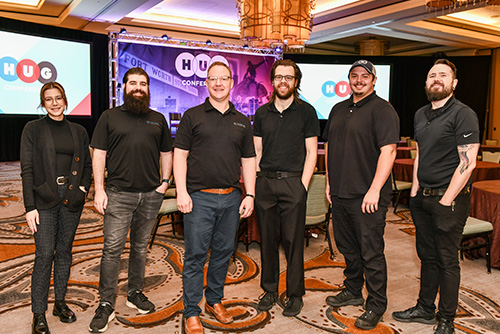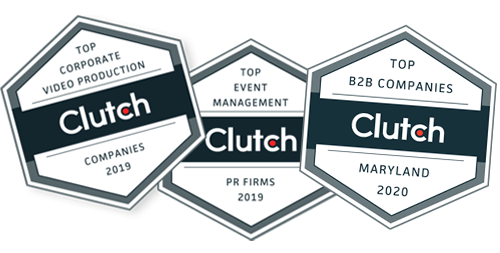 For associations, nonprofits, trade groups and nongovernmental organizations (NGOs), often the single most important project of the year is the planning and production of an annual gala or award show. These events – sometimes produced on their own, and sometimes positioned as the pinnacle of an annual conference or trade show – are high-risk, high-reward opportunities for everyone involved.
For associations, nonprofits, trade groups and nongovernmental organizations (NGOs), often the single most important project of the year is the planning and production of an annual gala or award show. These events – sometimes produced on their own, and sometimes positioned as the pinnacle of an annual conference or trade show – are high-risk, high-reward opportunities for everyone involved.
Ironically, one thing stunting revenue growth from these events is organizational fear of change, and the potential that change could disrupt expectations or actually reduce results. However, failure to innovate is one of the top reasons why galas and award events lose revenue. Put another way, doing the same thing from year to year is a good way to see your events die a slow and painful death – first to their reputation, and then to your revenue.
With that in mind, here are five steps you can take to boost revenues from your next annual gala or award event:
1. Strengthen the Theme
For many associations and nonprofits, the logistical demands of producing an annual event are so overwhelming that the production process itself overtakes any energy or focus on customizing the event. Maybe you have a gala committee and one of its tasks is to create an event theme.
Fine – but how is the theme chosen? And, even more to the point, how is it implemented? Each theme you select has potential value hidden within it. For example: Perhaps a travel theme is good for your next gala, but a travel theme that allows attendees to ‘visit’ the countries your NGO actively works in is far better.
2. Deepen Sponsor Relationships
So much energy goes into promoting ticket sales and putting ‘butts in seats’ that most galas and award shows dramatically under-leverage the true value of sponsors. To many association and nonprofit staff, the biggest priority with sponsors is to make sure their logos appear correctly in the event program. And yes, a logo is a good thing – but sponsors can benefit from so much more, and they are willing to pay for it.
One way to do this is to offer sponsors crossover opportunities that integrate their event sponsorship with other marketing and advertising throughout the year. Another way is to engage sponsors in a more dynamic discussion of how they can be incorporated into the event, perhaps by providing content or imagery that can become a part of the event experience, for example.
3. Widen the Marketing Calendar
The key to this step is to become committed to the steps that come before it. If you strengthen your theme and more effectively integrate your sponsors, now you can widen the marketing calendar for the event and tie it into other activities.
For example, our earlier discussion of a travel theme could be used as the framework for an association to execute seminar or webinar programming from around the nation that showcases regional messages tied to the annual event theme. A public advocacy group could reposition its policy updates to address five different components of its advocacy program over the five months preceding the gala, then organize the event space itself around each of these themes.
4. Protect Your Pricing
Ticket pricing and sponsorship pricing are immediate indicators of the value that you place on your own event. Of course, pricing needs to be accessible to your audience but it should not go down, nor should you acquiesce to every negotiating strategy that sponsors attempt in order to lower their investment cost.
Lowering your prices is the fastest way to tell everyone that your event is going down hill and that your organization is in trouble. Instead, consider offering value-added options with ticket sales (such as including a discounted raffle ticket with certain event tickets). And with sponsors, the key is to deepen their connection by going after a wider range of their marketing spend and giving them more, rather than charging less.
5. Design an Integrated Experience
In order to deliver on the first four steps, you need to have a strategy for not just producing the event, but rather for crafting the event. Each year’s event needs to have certain consistent components and brand messages, but each one also needs to stand on its own. People remember your brand fondly if the experience they have of it keeps building new experiences on old ones. Step it up each year, and integrate — integrate the theme; the sponsors; the pre-event and post-event components; and other value-add opportunities.
To do this, you need to stop thinking of your event as just that – an event on a calendar – and start thinking of it as an experience. Most of the time, your internal staff are too stressed and sleep-deprived to brainstorm and plan on their own. Instead, you need to partner with an experienced event production company – one that is not only capable at marketing event production but also outstanding at event design.
Click here to learn more about how an experienced event production team can help you craft an annual gala or award show experience that increases revenue and results. Or, contact us to talk with a member of the TalkingTree Creative team about event design and production for your next annual event.
Image Credit: RichTech (Flickr @ Creative Commons)




